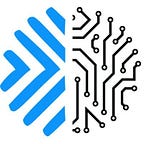Smart Contracts are going to revolutionize the Art Industry
- Digital Collectibles for the WIN!!!
WHAT ARE SMART CONTRACTS ESSENTIALLY?
Simply said, a “smart contract” is a software that runs on Ethereum’s blockchain. It’s a collection of code (its functions) and data (its state) that lives on the Ethereum blockchain at a single address.
Smart contracts are a type of a cryptographic code. This indicates that they have a balance and are able to transmit transactions over the network. They are not, however, controlled by a user; instead, they are deployed to the network and run consistent with a group of instructions. User accounts can then engage with a smart contract by sending transactions that cause the smart contract to perform a function. Smart contracts, like conventional contracts, may set rules and have them enforced automatically through programming. Smart contracts can’t be erased by default, and their interactions are permanent.
WHY ARE ARTISTS IN DISTRESS?
Being an artist has always been a grueling occupation. It is not always simple for them to commit the time necessary to express themselves via their work, to take a creative approach to it, and to seek peak excellence in their creations. These are the kinds of problems they’ll have to deal with while creating their artworks. The real battle begins when they exhibit their work at galleries, exhibits, and auctions. They must make touch with a variety of middlemen, including art gallery owners and consultants. These intermediaries are the helping hands that allow a budding artist to display their work and abilities in public locations in the hopes of making enough money to support themselves.
However, just like every other industry, this one has faults. The collector is the one with the most clout when it comes to purchasing art. From the perspective of an art gallery, the auctions and art shows that they have on a regular basis are designed to entice more collectors to come see what artworks they have on exhibit with their current line of artists. Collectors are valuable clients for art galleries, and they do not want to jeopardize their business relationship in any way. As a result, the collectors are able to openly take use of this edge to their advantage. They buy an artwork and keep postponing payment, and in some situations, they even rescind the sale of the artwork after a lengthy period of time. The gallery does not pay any remuneration to the artist until the gallery receives payment for the artwork. Because galleries must wait for collectors to finish payment for their purchases, they must put artists on hold while they await their half of the money. The galleries themselves have a circular aspect as a result of this. They keep one artist after another waiting, and when they receive cash from the collectors, they pay off the older artists who have been waiting for reimbursement.
Artists are often obliged to take legal action against galleries because they have no other option. This has unfavorable effects for the artists, such as a loss of future opportunities, increased legal costs, and exclusions. Even if the artist initiates legal action against the galleries, there is no assurance that they will be reimbursed for the sale of their artwork through the gallery by the time the judicial system renders a decision.
However, not only the artists, but also the galleries are harmed as a result of the galleries’ failure to pay the artists on time. Galleries are not eligible for credit or small business financing.
IN THE ART INDUSTRY, THE BENEFITS OF BLOCKCHAIN
Blockchain technology may provide a variety of benefits that may be used in the creative economy such as:
· The blockchain system is a platform where the security of the users is prime aspect for their functioning. The records once made on the blockchain are stored in it till the network of the blockchain exists which may extend up to lifetime. Fraud is harder to commit since transactions are verified and accepted by agreement among network users.
· All the detailed records are maintained in the blockchain are in such a manner that it can be traced by anyone or be audited with respect to the previous transactions.
· The system is built on a distributed platform rather than a centralised one, with each member having access to the same ledger data, allowing them to come and go as they want and providing resilience against attacks.
· In the blockchain, every transaction made by them is identifiable by a special transaction ID which they get after their purchase which helps them to prove their ownership in the form of a digital certificate.
#rachayatatech #solana #web3 #api
Join Coinmonks Telegram Channel and Youtube Channel learn about crypto trading and investing
